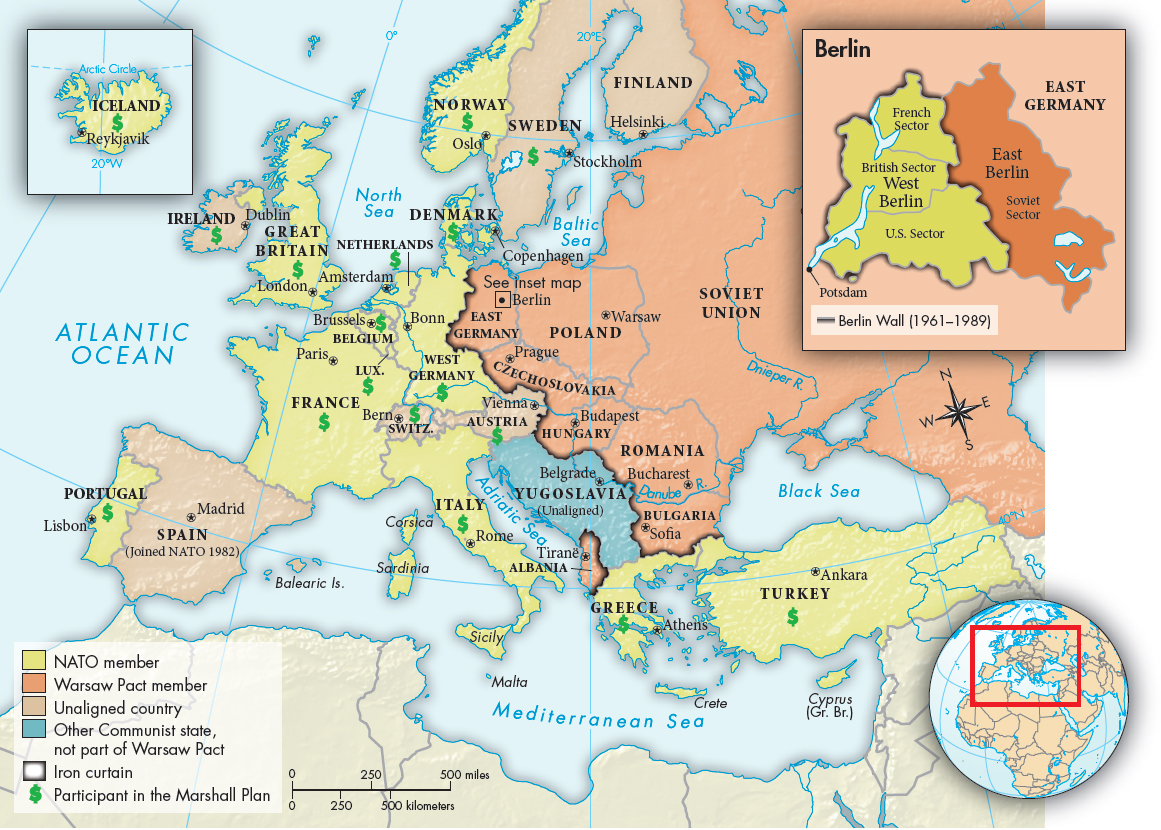The Cold War and the Division of Europe
The Cold War originated in disputes over the political outcome of the war. During talks among the three major powers — the United States, Britain, and the Soviet Union — held toward the end of the war, Soviet leader Joseph Stalin insisted that control of eastern Europe was the best way to guarantee military security from Germany. When Harry Truman demanded free elections throughout eastern Europe, Stalin refused.
Truman’s tough stance was bolstered by the fact that the United States was the only country that possessed atomic weapons at the end of the war. Just as the U.S. sense of security came from having a monopoly on the atomic bomb, Stalin pursued security for the Soviet Union by militarily occupying eastern Europe and imposing obedient governments that would provide a buffer against the threat of western European aggression.
President Harry Truman misread these occupations as a campaign for world domination. Communist movements beyond Stalin’s occupation zone in Greece and China fed these fears. In October 1945 Truman issued the Truman Doctrine, aimed at “containing” communism to areas already occupied by the Soviet army by providing military and economic support to governments threatened by Communist control.
Truman asked Congress for military aid for Greece and Turkey to prevent the spread of communism. Soon after, Secretary of State George C. Marshall proposed a broader package of economic and food aid — the Marshall Plan — to help Europe rebuild. Stalin refused Marshall Plan assistance for all of eastern Europe, where he had established Soviet-
On July 24, 1948, Stalin blocked all road traffic through the Soviet zone of Germany to Berlin. The Western allies responded with an airlift of provisions to the West Berliners. After 324 days the Soviets backed down. In 1949 the United States formed an anti-
The Soviet Union, with its massive army arrayed across eastern Europe, and the United States, with its industrial strength and atomic weapons, emerged from the war as superpowers whose might dwarfed that of other countries. Superpower status reached an awkward balance after the Soviet Union developed its own atomic weapons in 1949. Both nations pitched themselves into a military and geopolitical confrontation that stopped short of outright war: the Cold War (Map 31.1).

A deep ideological divide defined the rivalry between the United States and the Soviet Union. The United States saw itself as the defender of a “free world” governed by liberal principles such as free markets, private property, and individual rights protected by democratic constitutions. The Soviet Union defined itself as the defender of the rights of workers and peasants against their exploiters, the rights of colonial peoples against their colonizers, and economic development based on rational production and equitable distribution. The Cold War sharpened the distinctions between these models, creating opposing paths that the superpowers pressured other countries to follow.